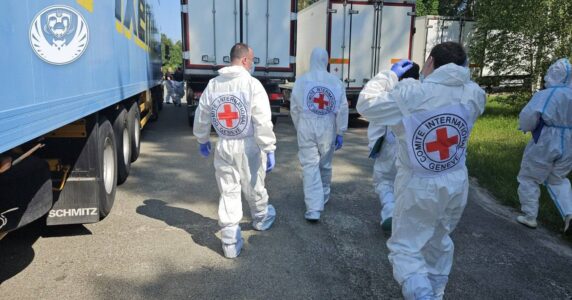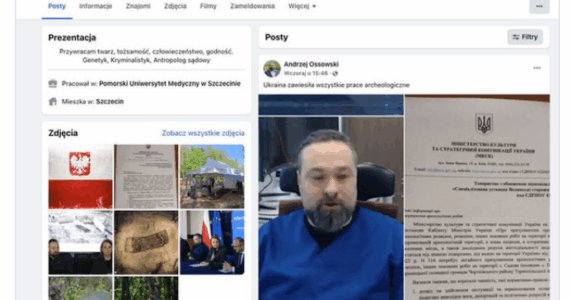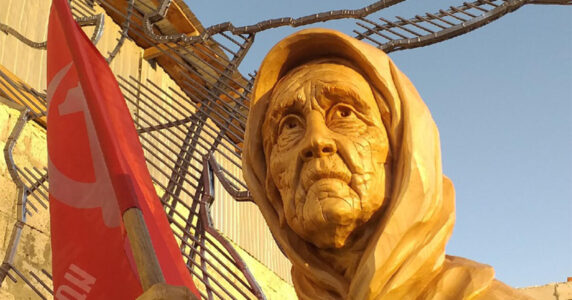Navigation and useful materials
Declaring his decision on a “special military operation,” Putin explained the reason for unleashing a full-scale war in Europe by the need for “denazification” and “demilitarization” of Ukraine.
The terms an average Russian found difficult were quickly abandoned, and the ideological justification for aggression was reduced to the fight against the mythical “Nazis.” But the preparations for the war were not limited to a propaganda campaign to dehumanize Ukrainians and stigmatize Ukrainian democracy as a “neo-Nazi regime.” Combining the tools of military, political, and information pressure, the Kremlin tried to convince the world of the “legitimacy” of its claims and the futility of supporting Ukraine.
The Centre for Strategic Communication and Information Security analyzed the statements and actions of the Kremlin that preceded the full-scale invasion on February 24, 2022.
“Nuclear threat,” “American biolaboratories,” “a single people,” and other fakes
The campaign to discredit Ukraine, Ukrainian statehood, and Ukrainians as a nation has been going on for several years. On the eve of the full-scale invasion, the Kremlin’s propaganda machine focused on the dissemination of Putin’s pseudo-historical delusions and other fakes. They were to convince not only Russians, but also foreign governments and citizens that:
- Russia had grounds for claims against Ukraine and the “collective West”;
- Ukraine was a completely corrupt artificial state, a failed state;
- Ukraine (not Russia) posed a threat to security and stability;
- Ukraine did not have the resources to repel Russia and was doomed to defeat in the event of an open military confrontation.
In July 2021, Putin’s article On the Historical Unity of Russians and Ukrainians was published on the Kremlin’s official website. This opus denies not only the right of Ukrainians to their own state, but also the existence of Ukrainians as a separate nation.

The same topic was discussed by the Russian dictator in his video address on February 21, dedicated to the recognition of the “independence” of the “LPR” and “DPR.” It voiced a barely veiled threat of the destruction of Ukrainian statehood, which Lenin allegedly “gave to Ukrainians.” It was this message that was embedded in the phrase: “We will show you what real decommunization is.”
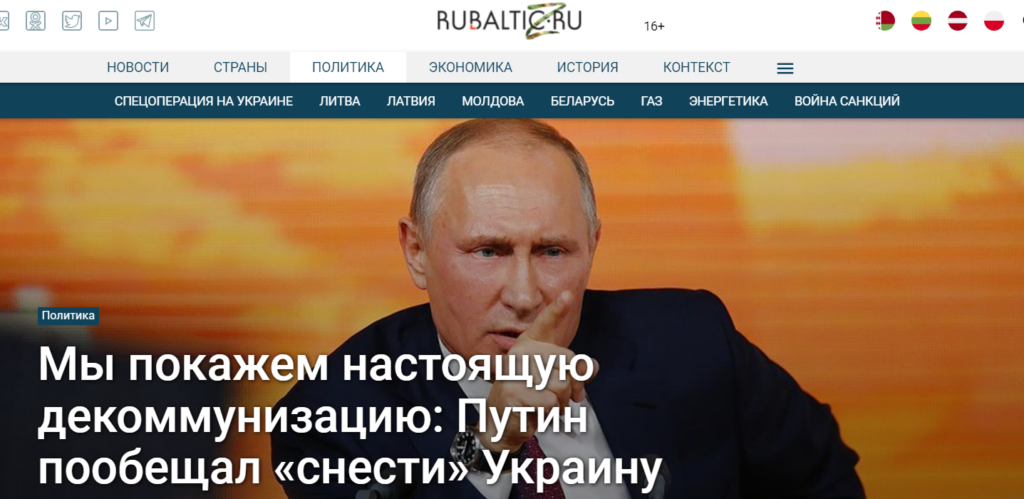
In addition to the traditional accusations of “neo-Nazism” and “genocide of the people of the Donbas,” shortly before the full-scale invasion, propagandists launched several new “scary” fakes in the media field. In particular, the threat of Ukraine restoring its nuclear status.

The corresponding statements were made on February 21 by Putin and Russian Defence Minister Shoigu. In December, a fake about a “dirty bomb” allegedly received by the Azov regiment was spread.

Propaganda continued to groundlessly accuse Ukraine of developing bacteriological weapons in “American bio-laboratories” and fuel conspiracy theories about its involvement in the artificial creation of the coronavirus.
Statements that Ukraine was allegedly engaged in the creation of weapons of mass destruction intensified after the invasion. Simultaneously, Russian troops shelled the “neutron source” nuclear installation in Kharkiv, seized the Chornobyl and Zaporizhzhia nuclear power plants and placed weapons there.
Propaganda was actively but unsuccessfully working to create a casus belli: Ukraine was accused of preparing offensive operations in the Donbas, of which no intelligence service of the world was aware, except for the Russian, and other “provocations,” in particular on the territory of Russia.
Cyberattacks and concentrating troops at the border
Large-scale military operations should be preceded by the concentration of relevant forces and means in priority areas.
The concentrating of Russian troops at the Ukrainian borders began in the spring of 2021 under the pretext of preparing for the Zapad-2021 exercise. At that time, the Russian command deployed two combined-arms armies and three formations of airborne troops to the border areas. The strength of the group, consisting of 50 battalion-tactical groups, was estimated by Ukrainian and Western intelligence at 110,000 people. Considering the 40,000-people force in the occupied Crimea, most of the then personnel of the Russian ground forces were concentrated in the northeastern and southern directions.
READ ALSO: Information challenges for Ukraine in the second year of the war
The Zapad-2021 exercise officially ended on September 15, but most of the military and equipment involved in it remained in the Rostov, Kursk, Voronezh, and Belgorod regions of Russia. According to the Main Intelligence Directorate of Ukraine, in November, almost 100,000 Russian troops were on the border.
In January, the Russians, again under the pretext of preparing for the Union Resolve 2022 exercises, deployed equipment and personnel to Belarus.
Under the same pretext, in early February, Russia blocked navigation in the Black Sea and the Sea of Azov. Back in November, the Kremlin was indignant at the presence of NATO ships in the Black Sea and accused the United States of creating a “threat to security and stability” and “studying the theatre of operations” in case of an offensive of the Armed Forces of Ukraine.
A part of the preparation for the attack was a series of cyberattacks on Ukrainian state and financial institutions on January 14, 15-16 and February 23. They were aimed at the government service Diia, the resources of the largest banks, in particular the state-owned PrivatBank and Oschadbank, the Verkhovna Rada, the Government and ministries, etc.
The statement of the General Staff of the Russian Armed Forces on February 15 about the alleged withdrawal of troops from the Ukrainian border turned out to be a blatant lie: the full-scale invasion began in a week and a half.
Termination of the Minsk agreements
On February 21, the Russian Federation recognized the “independence” of the “DPR” and “LPR,” puppet formations it had created in 2014. To make it look not like a personal whim of Putin, this decision was “approved” by the Security Council of the Russian Federation. Its members, members of the State Duma, as well as leaders of the pseudo-republics demonstratively asked the Russian dictator to finally listen to the “will of the peoples of the Donbas.”
The next day, the Russian parliament “ratified” an agreement on “friendship, cooperation, and mutual assistance” with the “DPR” and “LPR.”
At the same time, the Security Council of Russia “gave permission” to Putin to use troops outside Russia.

However, the introduction of an additional Russian contingent to the occupied areas of Donetsk and Luhansk oblasts had taken place the day before, in accordance with clause 4 of the decrees on the recognition of fake “republics.”


These actions were another violation of international law, an encroachment on the sovereignty and territorial integrity of Ukraine and witnessed Russia’s unilateral withdrawal from the Minsk agreements. After all, they provided for the political and diplomatic settlement of the conflict and the reintegration of the occupied districts of Donetsk and Luhansk oblasts.
On December 31, 2022, the law “On the special procedure for local self-government in certain areas of Donetsk and Luhansk oblasts” expired, for the extension of which the Verkhovna Rada of Ukraine voted annually until the full-scale invasion. The Minsk agreements lost their relevance.
Mobilization in the occupied districts of Donetsk and Luhansk oblasts
To make the termination of the Minsk agreements by Russia look like a forced step, propaganda actively worked to create an appropriate picture.
In February, several false flag operations took place, which the Russians tried to present as acts of aggression against the pseudo-republics and the Russian Federation. Hysteria was actively fomented, allegedly because of the preparation of a large-scale offensive by the Armed Forces of Ukraine.
Referring to this ghostly threat, the heads of the occupation administrations announced a mass evacuation of the civilian population to the territory of Russia on February 18. Denis Pushilin, the leader of the “DPR,” said that Volodymyr Zelenskyy “will give the order to go on the offensive in the near future.” A similar statement about the preparation of a “deep breakthrough” was made by his “colleague” from the “LPR” Leonid Pasechnik.
In the occupied cities, air raid sirens sounded almost around the clock, Russian propagandists filmed stories about the removal of women and children and their accommodation in the camps of the Rostov region.
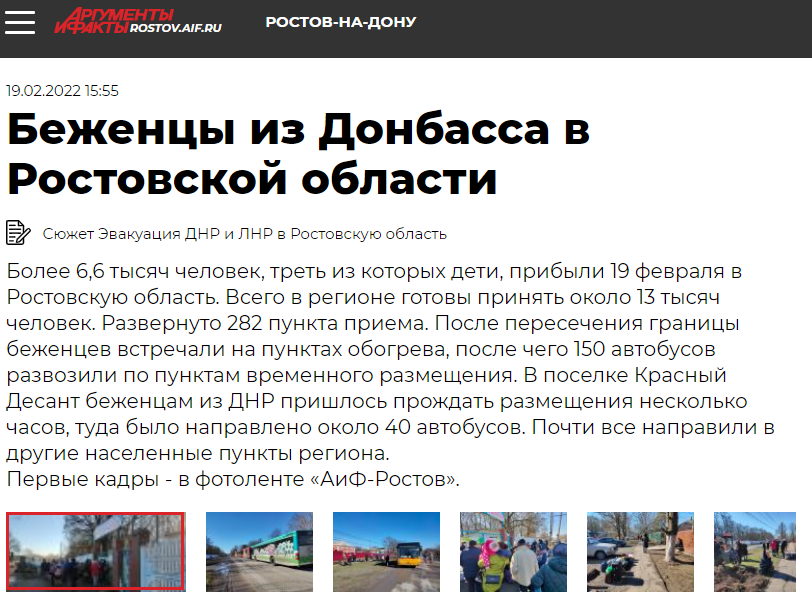
On the morning of February 19, a general mobilization was announced in the pseudo-republics. Men of conscript age were banned from leaving the occupied districts of Donetsk and Luhansk oblasts, and the occupation military enlistment offices began hunting for “reservists.”
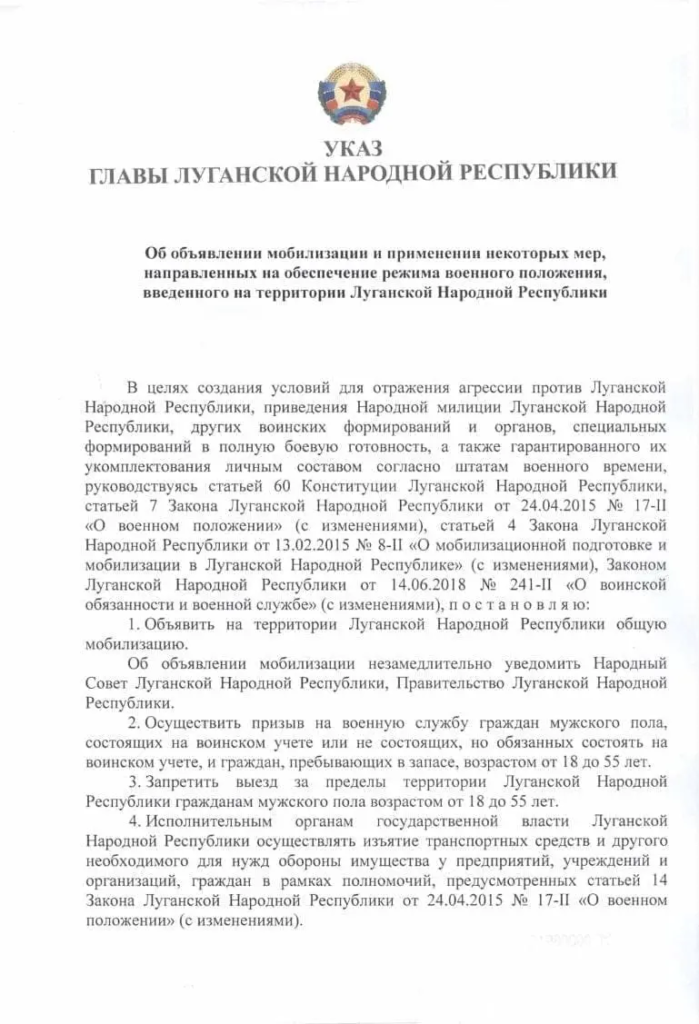
In the video addresses recorded by Pushilin and Pasechnik, the appeal to recognize the “independence” of the “LPR” and “DPR” was presented as a request to protect them from Ukraine.
Russia’s ultimatum to NATO and Western diplomatic efforts
The strengthening of the military presence on the border with Ukraine became the background for the “proposals” that the Russian Ministry of Foreign Affairs put forward to the North Atlantic Alliance in December 2021. These included:
- NATO’s refusal from further enlargement and a guarantee of Ukraine’s non-accession to the Alliance;
- refusal to deploy additional troops in countries that joined the Alliance after 1997 (14 out of 30 NATO members are Central European, Baltic, and Balkan states);
- NATO’s refusal to conduct exercises in Eastern Europe, in particular in Ukraine, the Caucasus, and Central Asia.
It was, in fact, an ultimatum because the Kremlin demanded to recognize the entire territory of the former USSR and the Balkans as its “zone of influence,” as well as to limit the rights of the Baltic States and Central Europe within the framework of the collective security system.
In January, bilateral negotiations between the United States and the Russian Federation took place in Geneva and meetings of the NATO-Russia Council were conducted in Brussels on Ukraine and security in Europe.
The Kremlin predictably did not receive confirmation of Washington’s readiness to decide the fate of European countries behind their backs and divide the continent into “spheres of influence.”
Even after that, Western leaders did not stop trying to convince Putin that attempts to impose his will on neighbours by force would not benefit Russia, and Ukraine would not be able to join NATO for a long time. In winter, there was a series of conversations between U.S. President Joe Biden, British Prime Minister Boris Johnson, and French President Emmanuel Macron with the Russian leader. But the latter did not heed the arguments.
The actions taken by the Russian regime during the second half of 2021 and the beginning of 2022 indicate that Putin was preparing for a full-scale attack and a “final solution to the Ukrainian issue.” The Russian dictator no longer concealed his outright irritation at the very fact that the Ukrainian state existed. The accusations against Ukraine, the requirements for the distribution of spheres of influence that are inconsistent with the realities, the spread of fakes can be considered an information cover for a new stage of aggression. Demonstrating diplomacy and caution in their statements, the leaders of Ukraine and the West tried to leave Putin the opportunity to “save his face” and abandon this plan. The Russian dictator, who apparently counted on a small and victorious war, fell into a trap of his own illusions and belief in his exclusivity.
Centre for Strategic Communication and Information Securi
If you have found a spelling error, please, notify us by selecting that text and pressing Ctrl+Enter.
